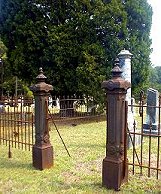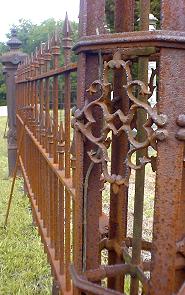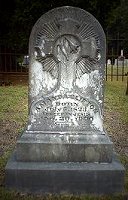

|
Malachai Crawford Cummings"Hon. M. C. Cummings, a prominent farmer and citizen of Itawamba County, Miss., was a son of Levy and Naoma (Keas) Cummings. He is the sixth of their family of eleven children, and was born in Limestone county, Ala., October 17, 1810. His father was born in Virginia about 1780, and was a member of one of the old families of that state who participated in the war of 1812. He was married in Virginia, and later removed to Kentucky, and thence to Limestone county, Ala., where he died in 1845. When he removed to Alabama the country was new and peopled with Indians, who were at one time so troublesome that he was obliged to leave the state, but returned a year or two later. he and his wife were members of the Primitive Baptist church. The latter died when Mr. Cummings, our subject, was about five years of age. She was a native of Virginia. The children were named Mason, Nancy, Jordan, Isaac, Catherine, David, M.C., Malachi, Levy, Rial, Betsey and Washington. Of these only M.C., Levy and rial are now living. The subject of this notice was reared upon his father's plantation and began to do for himself at the age of eighteen years. he emigrated to Western Tennessee and settled near Perdy, where he engaged in planting. He lived there several years, and in February, 1833 came to Columbus, Miss., where he married Miss Sarah, daughter of Hugh and Jennie (Thompson) Rogers, who were natives of South Carolina. Their five children were named as follows: John, William, Hugh, Jennie and Joseph. Mrs. Cummings was born in South Carolina, in 1815. She has borne her husband no children, but they have reared twenty-seven orphan children. The family removed from Columbus to this county in 1836 and located on the present site of the Fulton hotel. Mr. Cummings was the first settler in Fulton, and came at a time when the country was practically uninhabited except by Indians, who were not hostile, however, but showing good dispositions towards the settlers andwho llived by hunting and fishing, some of them raising small patches of corn. He was the owner of a tract of land embracing the site of the present town of Fulton, and there is one place near there where he leared the timber off in 1836, and upon which a good crop has been raised every successive season since. He built the Fulton hotel, which was the first public house in the county, and of which he was for some time the proprietor, though he has made planting his principal occupation. He is the owner now of about ten thousand acres of land in this county, about twenty-five per cent of which is under cultivation. He has occupied his present residence, about one mile north of Fulton, since 1854, and he was influential in the organization of his county, which took place some twenty years prior to that date. In 1839 he was elected probate judge, and in 1841 he represented the county in the state legislature. He was a member of the state convention of 1860 to decide upon some action in view of the political troubles of that time, and strongly opposed secession, but when secession was an accomplished fact, he did all in his power to aid the Confederate cause. He equipped a company which was commanded and organized by Captain Turner, and was known as the Cummings Grays, expending some $1,500. In 1861 he represented his district as state senator, and filled that officewith distinction during the entire war period. After the war he found that his property had been damaged to the extent of at least $100,000, but he at once set about the work of rehabilitation, resuming planting and gradually engaging more and more extensively in the cotton trade. He has been for forty-five years a member of the Methodist church, of which his wife is also a member. Although he has been an earnest member of the democratic party, he has, since the war, practically retired from politics. His operations in a business way have been very extensive, and he was the builder of most of the houses and of the Methodist church of the town of Fulton, and is the largest land owner in Itawamba County."Taken from an 1891 edition of Goodspeed's History of Mississippi "I do not find any records of when his large, two-story home was built one mile north of Fulton, but it stood until destroyed by fire February 1922. This house had large rooms about 20 feet square, a wide hall, wide back porch and portico out front. Mr. B.Y. Cummings refers to it as "Sunny Dell, that great old house of ten large rooms at the top of the hill." From the time we moved to my present home January 1, 1901 until the death of Mrs. Sarah Cummings (Uncle Mack's widow) in 1906 we often visited Mrs. Cummings who was almost blind but who enjoyed company. They kept peafowls and we could hear them to our house when they screamed." From "These Things I Remember...." by Miss Zereda Greene
|



